the next to last garden we'll see with - technically, about 15 minutes to enjoy it.
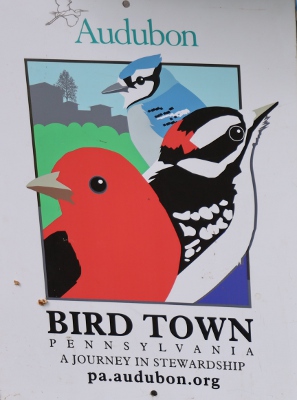 .
.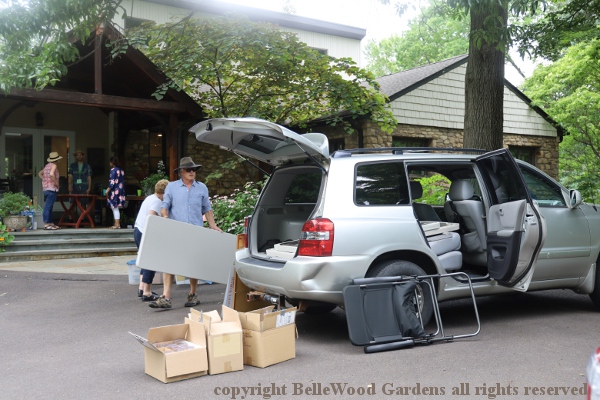
But even though the Audubon Pennsylvania Bird Town presenter is packing up
his display we are told we won't be shooed away. Very kind of the people on site.
.
If you have any comments, observations, or questions about what you read here, remember you can always Contact Me
All content included on this site such as text, graphics and images is protected by U.S and international copyright law.
The compilation of all content on this site is the exclusive property of the site copyright holder.
Designed for Nature
Chad Clem abd Reema Persad-Clem, garden number 2 in Doylestown
Saturday, 19 June 2021
Alas, we're not going to visit all six gardens, unfortunately. In fact, we reach
the next to last garden we'll see with - technically, about 15 minutes to enjoy it.
 .
.
But even though the Audubon Pennsylvania Bird Town presenter is packing up
his display we are told we won't be shooed away. Very kind of the people on site.

There is, once more, a fire pit, in this garden it is a modest one.

The tree house, on the other hand, is far from modest. I'm sure
that the family's 10- and 15-year old sons make excellent use of it.

Tree work has been done. Log piles are around, here and there. Clearly
this was a sizable and rotting tree. And this other one . . . stump as a
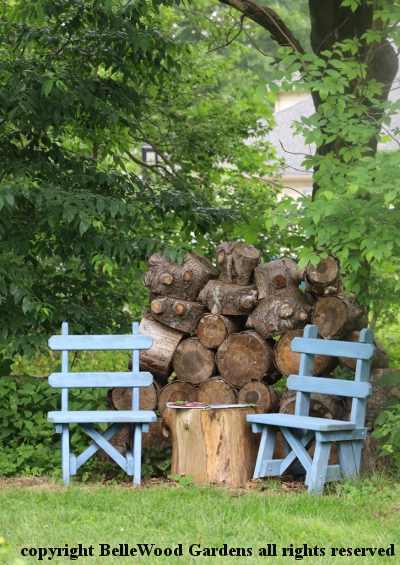
casual table and the rest as a backdrop for a seating area.

I notice a bee house, and not the first one we've seen today.
Its suitable for our native bees, not the imported-from-Europe
honeybees that the colonists brought over when they came.

The back of the property has a row of mature hemlocks, Tsuga canadensis, severely infested with a non-native pest, woolly adelgid Adelges tsugae. Rather than treat with systemic insecticides the Clems will be trying predator insects, Laricobius nigrinus beetles, which feed on the sap-sucking woolly adelgid
More information about treatment options may be found here
When the Clems bought the property a scant five years ago the ground beneath
the hemlocks was covered with a groundcover of pachysandra. It was their sons
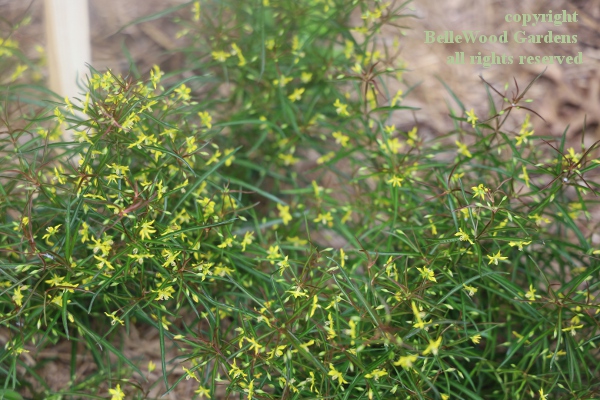
who cleared the space, which now supports interesting natives such as lance leaf loosestrife, Lysimachia lanceolata. Popular with Macropsis steironematis (a Lysimachia specialist bee) who makes pollen balls to feed to its young bee grubs. This species of bee is oligolectic, a specialist pollinator that visits a limited variety of plant species, often just in a single genus.
Water is a feature in this garden. The circular driveway around the tree house
is water permeable. Further up the driveway towards the street there's a culvert
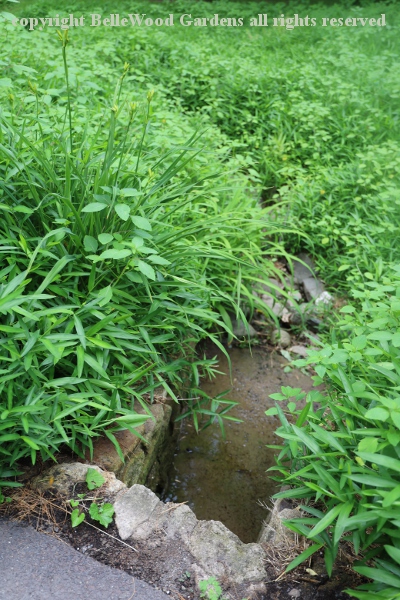
guiding water away. A small ornamental pool near the back of the house,

just the right size for one water lily. And an interesting metal tub with a pot

of horsetail, Equisetum hyemale, a spreading plant with several uses.
The rough stems containe silica, and can be used to scour pots, or used
as fine sandpaper, and are used to shape clarinet or saxophones reeds.

The handsome stone faced terrace at the back of the house is a backdrop for oak leaf hydrangea, Hydrangea quercifolia. The shrubs are still somewhat young and will, with time, make a solid border embellished in early summer with pyramidal clusters of white flowers. Rich burgundy foliage in autumn provides a second season of interest.

Ostrich fern, Matteuccia struthiopteris, along the driveway, was brought
from a previous home. The common name comes from the fertile fronds

that do indeed resembele the large feathers of that bird.
Dimorphic, the green fern fronds are sterile, the brown,
fertile, spore bearing fronds will persist through the winter.

The Clems used some of these fertile fronds, cut free and stuck
in the ground, as clever and creative edging along the driveway.
Alas, even though it's not the magic wishing hour of the dark middle of the night our time is still up. Back to the car and be on our way home. Good enough. Five gardens, designed for nature.
Back to Top
Back to Designed for Nature
Back to June
Back to the main Diary Page